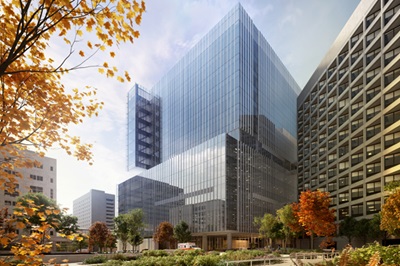
[5 min read]
- We are proudly celebrating over a century of care and dedication to our communities at Providence Swedish.
- Nils Johanson, M.D., with support from the a group of 10 Swedish immigrants, founded Swedish Hospital in 1910.
- Dr. Johanson's ambitious goal was to bring advanced medicine and care to the residents of Seattle. That vision has flourished into a world-class hospital system that's home to some of medicine's finest minds.
- The generosity of Swedish Foundation donors continues to support the expansion of Swedish and our commitment to carrying on Dr. Johanson's invaluable work.
The idea was simple: Create a world-class hospital in Seattle — one committed to improving the health and well-being of every patient, regardless of their ability to pay. Thanks to thousands of donors, supporters, and caregivers, Providence Swedish has been able to do just that for over a century as the largest not-for-profit health system in the city. In celebration of Providence Swedish’s 115th anniversary, we look back at transformational acts of generosity that have had lasting impacts on countless patients in our community.
June 1, 1910: Swedish Hospital opens
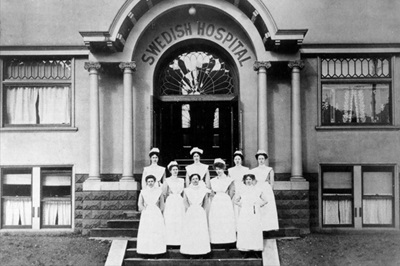
In a two-story converted apartment building on Seattle's Belmont Avenue, Swedish American surgeon Nils Johanson, M.D., opens the doors to what was then known as Swedish Hospital. Dr. Johanson and 10 fellow Swedish immigrants personally contribute funds to open the nonprofit hospital, whose charter stipulates that all revenues are to be reinvested back into the hospital. The founders rely on community fundraising to support their efforts, including soliciting donations redeemable for 60 percent of their value in hospital services, up to $100 — the equivalent of about $3,300 today.
July 21, 1910: The first baby arrives
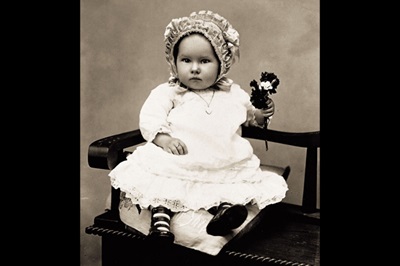
Less than two months after opening, Swedish Hospital delivers its first baby: Clara Peterson. Dr. Johanson personally chauffeurs Clara’s mother from her home in Queen Anne to the hospital in his Stutz roadster. This marks the first of thousands of babies to be born at Swedish, which has the reputation of being “the baby hospital” in Seattle. Today, every year at Providence Swedish, nearly 10,000 babies are born — about a baby every hour. Philanthropy continues to fuel innovation in care for children and their parents, including expanding the state’s largest neonatal intensive care unit, supporting the comprehensive resources and services at the Lytle Center for Pregnancy and Newborns, and integrating culturally congruent doula services for before, during, and after birth.
March 16, 1913: A Summit Avenue expansion
Swedish Hospital dedicates its new building: a 40-bed hospital on Summit Avenue. The expansion comes after quickly outgrowing its existing space on Belmont Avenue. Initial plans to build a larger facility began in August 1912 but evolve into a property purchase when local physician Dr. Edmund Rininger passes away following a car accident. His widow, Eleanor, offers the Swedish Board of Trustees Dr. Rininger’s finished hospital, including furnishings. The board purchases the facility for $90,723, and Eleanor donates her late husband’s medical library and the hospital’s X-ray machine. Supporters across Washington and Alaska make donations and hold fundraisers to support the purchase, including Seattle’s Swedish Club, which raises $5,000 by hosting a bazaar.
1921: Fostering medical education
When state licensing requirements impact the number of necessary continuing education hours for physicians, Swedish develops residencies open to all area doctors. This begins Providence Swedish’s ongoing commitment to medical education, which continues to flourish to this day. Internships and residencies create an environment of innovation and help train the next generation of physicians. Today, Providence Swedish offers 188 fellowships and graduate medical education programs, many of which rely on philanthropy for seed funding and go on to have a positive financial contribution to the institution.
1927: A nursing school grows
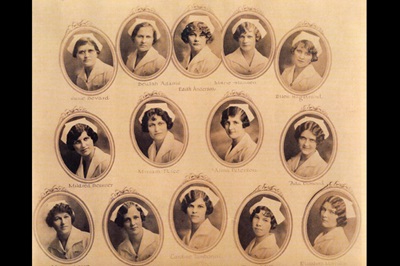
Due to Washington legislation requiring specific licensing, nursing schools run by hospitals proliferate in the early 1900s. In its inaugural year, Swedish Hospital graduates four nurses. By 1927, 89 nursing students graduate from the program. Over the ensuing decades, Swedish Hospital grows its nursing programs and partners with various universities to offer clinical rotations to students. Philanthropy-funded educational opportunities, such as our Nurse Technician Clinical Partnership, help support current and future nurses, which leads to improved caregiver well-being and continued compassionate care for our patients.
November 15, 1932: Introducing the Tumor Institute
At a 1928 conference in London, Dr. Johanson learns of a novel way to treat cancer with X-ray radiation. Upon his return, he establishes the Tumor Institute at Swedish Hospital to integrate this research-and-treatment model. Construction begins on the new institute in November 1932. The new building can accommodate 75 beds and is the first treatment center west of the Mississippi River to offer high-energy radiation therapy for patients undergoing cancer treatment. The three-million-volt X-ray tube requires three-foot-thick concrete walls, floors, and ceilings to contain the radiation. In 1976, the Tumor Institute moves into the Arnold Pavilion, and, in 1999, it’s renamed Swedish Cancer Institute. The Tumor Institute marks one of the earliest examples of Swedish Hospital implementing new techniques and specialties to offer advanced care for its patients. This commitment to leading-edge research and novel therapies continues to this day and not only improves survival rates and quality of life for patients but also attracts top-tier talent to the Pacific Northwest for the benefit of the entire community.
1956: Growth with the help of philanthropy
Swedish Hospital expands its capacity to 360 beds with the addition of a six-story wing named for Johanson after his passing in 1946. When the second phase of construction is complete, the hospital grows to 396 beds and changes the entrance to Columbia Street. With a $198,000 grant from the Ford Foundation to “extend and improve the services provided to the community,” Swedish Hospital is able to purchase an emergency generator, install a new elevator, and create a central supply service, making it easier to administer care for patients.
1960: Building crucial community partnerships
Researcher Dr. Charles Scribner, who invented the Scribner shunt that allows for ongoing dialysis treatment, approaches Swedish Hospital about setting up a dialysis unit for patients. Thanks to a grant from the Hartford Foundation and the United States Public Health Service, Swedish Hospital is able to open space in Eklind Hall for what will become the three-bed Seattle Artificial Kidney Center, the first outpatient dialysis treatment center in the world. Continued philanthropic support makes it possible for all patients seeking care to receive treatment.
This is just one of many examples in Swedish Hospital’s history of collaborating with researchers and local institutions to further care for patients. For example, surgeon Dr. William B. Hutchinson founded the Pacific Northwest Research Foundation in 1956, which was housed within Swedish Hospital and provided a place for practicing physicians to carry out their own research. This later became the Pacific Northwest Diabetes Research Institute and led to the Fred Hutchinson Cancer Research Center, which made extensive use of Swedish facilities in its early years.
1963: Continued expansion to meet demand
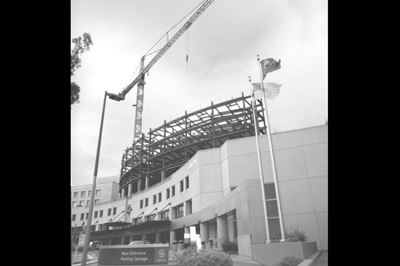
Construction of a new surgical pavilion brings state-of-the-art infection control to Seattle. The advanced operating rooms feature higher air pressure and designated entrances and exits, designed to keep airborne germs at bay and reduce the chance of infection.
Further expansion at Swedish Hospital continues in the next several decades, fueled by transformational donors and the establishment of the federal Medicare program in 1965. Medicare grants insurance coverage to older adults and younger people with preexisting conditions, leading to an increased demand and need for health care in Seattle.
In 1968, thanks to a $1.5 million donation from Harold Heath, the hospital adds physician offices in the Harold H. Heath Tower, granting doctors a closer connection to the Swedish Hospital system. In 1975, the seven-story Lawrence M. Arnold Pavilion opens thanks to a $1 million donation from the building’s namesake. In 1978, Swedish Hospital merges with Seattle General Hospital and Doctors Hospital, bringing Swedish Hospital up to 600 beds and making it the largest hospital in the state. In 1985, the 16-story Elmer J. Nordstrom Medical Tower opens, named in honor of Dr. Johanson’s son-in-law and longtime trustee.
1992: World-class health care beyond First Hill
In 1992, Swedish Hospital purchases Ballard Community Hospital, which had been founded in 1928. Eight years later in 2000, Swedish Hospital merges with Providence, turning the former Providence Medical Center into Swedish Cherry Hill. In 2010, the former Stevens Hospital becomes Swedish Edmonds, and in 2012, Swedish Issaquah opens. This transformational growth, extending top-tier care across Puget Sound, is fueled expressly by philanthropy and community support. This dedication to increasing access and reaching more populations within our community is an ongoing part of Providence Swedish’s mission.
2023: Building a hospital of the future

In 2023, Providence Swedish breaks ground on its North Patient Tower project, slated to open in Fall 2027. The 12-story, state-of-the-art “hospital of the future” will expand access, drive innovation, and ensure world-class care for generations to come. Philanthropy, community support, and transformational donors are the only reasons a project like this is possible. Click here to read more about our exciting North Patient Tower.
Learn more and find a physician or advanced practice clinician (APC)
Whether you require an in-person visit or want to consult a doctor virtually, you have options. Contact Swedish Primary Care to schedule an appointment with a primary care provider. You can also connect virtually with your provider to review your symptoms, provide instruction and follow up as needed. And with Swedish ExpressCare Virtual, you can receive treatment in minutes for common conditions such as colds, flu, urinary tract infections and more. You can use our provider directory to find a specialist or primary care physician near you.
About the Swedish Foundation
Your generous gift helps support a healthy tomorrow for everyone in every communty we serve. Learn about more ways to give to the Swedish Foundation or make a direct donation online at swedishfoundation.org. You can also contact the Foundation at 206-368-2738 or email foundation@swedish.org. Thank you for helping us shape the future of healthcare. We can’t do it without you.
Information for patients and visitors
Additional resources
Recognizing the care, commitment and resilience of our nurses
Providence Swedish’s Simulation Center provides nurses hands-on experience | king5.com
Your generosity supports lifesaving care for our tiniest patients
Nursing & Allied Health Education Programs | Swedish
This information is not intended as a substitute for professional medical care. Always follow your healthcare professional's instructions.
Providence Swedish experts in the media
Follow us on Facebook, Instagram and X.























